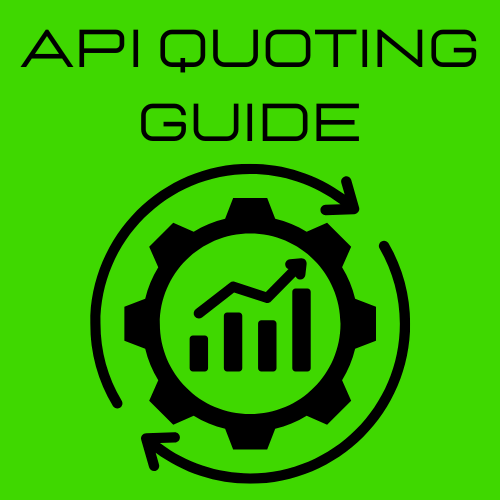Your API Quoting Guide
Know before you quote!
Automating freight quoting can significantly improve efficiency, but there are key challenges and considerations you need to be aware of. This guide will help you navigate the process and maximize your ROI.
Two Major Barriers to API Quoting
Shipper TMS Fees – Some shipper TMS platforms charge for API connections. Understanding these costs upfront is crucial.
API Quality & Support – Even if a shipper has an API, consider how well-documented it is and whether they have the resources to implement and maintain it.
Key Considerations for API Quoting Success
✅ Know which shipper TMS platforms charge for API connections. This cost can impact your ROI.
✅ Calculate your ROI. Use this formula:
(Your quoting solution bill) × 5X
Compare this to your realized margin to determine profitability.
Ensure the pricing scales with your needs and allows for sustainable margins.
✅ Leverage pre-built API connections. The more turnkey APIs your quoting platform already supports, the faster and easier implementation will be.
✅ Understand API types:
Real-Time-Rating API – Requires a response in 3 seconds or less for live quoting.
Spotboard API – Automates spotboard load quoting and enables auto-rebidding if loads are available.
✅ Breakthrough Fuel considerations. If your shipper requires Breakthrough Fuel, be aware that there is no real-time-rating API for this service at this time.
✅ Identify shippers without APIs. Some shippers do not offer APIs and will require RPA (Robotic Process Automation) to connect to their spotboards.
✅ Check pricing engine compatibility. Does your quoting platform integrate with external pricing engines?
Can you use your own lane history or manual truck prices for quoting?
✅ Assess platform connectivity. Ensure the platform supports open APIs such as:
Shipper API
Reporting API
Bring-Your-Own Pricing Engine API
✅ Evaluate rule engine flexibility.
Can you stack rules dynamically or create one-off rules based on quote conditions?
Is the platform user-friendly for building custom automation rules?
✅ Real-time analytics & reporting.
Does the platform provide in-app analytics?
Can you track real-time quoting performance and adjust strategies accordingly?
✅ Speed of implementation.
How fast can your team go live?
Standard timeframe: 24 hours to 1 week for existing API connections.
✅ Ensure safety nets are in place.
Does the platform allow for capacity limits and no-quote rules to prevent over-commitment?
✅ Use global rule settings.
Can you apply holiday surcharges or weather-based pricing adjustments across multiple shippers?
✅ Start with semi-automated quoting.
Test the platform’s performance before fully automating your quoting process.
✅ Assign shipper profiles to agents.
Does the platform support an agent model, linking shipper profiles to users or teams?
✅ Access a well-built help center.
Does the platform provide how-to guides and video tutorials for easy onboarding and troubleshooting?
Final Thought
By addressing these key factors, you can optimize your API quoting process, minimize risks, and scale automation profitably. Start small, measure success, and grow with confidence. 🚀

